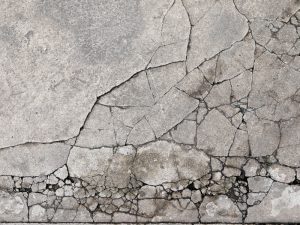Concrete Floor
Concrete Floor

How commonly have flooring contractual workers introduced an inflexible resinous polymer flooring framework just to have problems months after the fact for a broken floor? The standard overseeing this conduct is the “who worked on it last” rule, which implies — “in the event that you covered it, you acknowledged it!”
Break issues can be a typical involvement in the deck business. So what data ought to be accumulated and reported to keep the duty where it has a place and what data ought to be gathered to show who is extremely capable when a split shows up after the covering or overlay has been introduced?
Solid Cracks
Concrete is by a wide margin the most well-known auxiliary substrate on which resinous ground surface materials are connected. Concrete, in its most essential portrayal, is a blend of the bond, different evaluations, and sizes of total, and water. A Concrete Floor can be designed and decorated but must be handled carefully to prevent cracks. While the cosmetics of cement is fundamental in the plan, the correct situation, relieving, and drying of cement is an amazingly intricate procedure requiring a high level of mastery.
There is a wide range of blend plans that are utilized to change the execution and physical qualities of cement. Every one of these plans have upsides and downsides, yet when in doubt, factors that add to the measure of solid splitting incorporate include blends, climate conditions, legitimate evaluation determination and compaction, water-to-bond proportions, dampness obstructions, appropriate restoring and drying of the solid, legitimate design and cutting of joints, and over-burdening the piece. The truth of the matter is, there is no real way to totally anticipate when and precisely where the solid will break. So what can a ground surface worker do to maintain a strategic distance from issues with the solid breaking?
Know The Cracks!
Solid splits for some reasons. Probably the most widely recognized reasons are as per the following:
1. Breaking Due to Corrosion. The consumption of strengthening rebar and other inserted metals is a noteworthy reason for breaking in cement. As fortifying steel consumes, it extends. That makes interior powers that in the end beat the elasticity of the solid, bringing about splitting and other solid surface disappointments. Regularly rust can be seen at the surface and can be an assistance in rapidly recognizing this kind of breaking.
2. Expansion Cracks. Likewise with numerous materials, solid will grow exponentially as it gets more sweltering. This development can cause massive weight on a solid floor. As the solid extends, it pushes against all deterrents in its manner. When it comes against a steadfast item, for example, another solid floor, the more fragile of the two hindrances will be compelled to split. Planners plan for this by putting extension joint material, for example, froth, black-top, and stopper, at the interface between the solid floor and dividers, sections, and other auxiliary segments.
3. Loss of Subbase Support. This is frequently caused when the subbase is washed-out or settles from its unique compacted state, causing an implosion of the solid section. Despite the fact that it is most usually observed in more established sections, it tends to be seen in new development when the solid structure work has been expelled too soon in the restoring stage.

4. Warm Cracks. Warm breaks are caused when the temperature increments in the inside parts of the solid, making it extend, while the outside surface of the solid is cooling, making it contract. At the point when the temperature differential between the inside and outside is excessively extraordinary, significant pliable anxieties can cause warm splits at the surface. This sort of breaking is normally observed when concrete is in mass, yet it can likewise be found in thicker solid floor pours.
5. Crazing Cracks. Crazing splits are normal and show themselves as little example breaks happening in a story section surface. They are caused when the outside of the solid floor dries sooner than the hidden cement. These breaks are generally littler than 1/8‒1/4-inch profound and are normally not impeding to the execution of the solid.
6. Plastic Shrinkage Cracks. Plastic shrinkage breaks are caused when dampness vanishes quicker from the outside of recently poured cement, and after that drain water rises to the top to supplant the dissipated water. Low dampness, raised temperatures, and high breezes would all be able to have an impact in drying out the highest point of a solid chunk. As the highest point of the chunk dries, it starts to shrivel. The hidden solid, still wet, controls this shrinkage, making tractable pressure create in the powerless highest piece of the solid surface. This outcome in shallow splits of changing profundities. These breaks, for the most part, run parallel with one another about 1‒3 feet separated and can be genuinely wide at the surface. Ordinarily, they are a corrective deformity, and whenever fixed, they are not impeding to the execution of the solid floor.
7. Drying Shrinkage Cracks. Concrete, in its plastic state, gains volume because of the exothermic hydration response of bond and the response of calcium sulfate and calcium aluminate to shape calcium sulfoaluminate. This increase in volume happens inside an initial couple of hours subsequent to blending with water. As the solid loses dampness and starts to solidify, it loses volume and acts much like a wet wipe as it dries. At the point when shrinkage is limited by its contact with the subbase, encompassing auxiliary segments, for example, dividers, sections, steel fortification inside the solid, and channeling in and through the solid, pliable pressure is created inside the solid itself. Concrete, while being solid in compressive qualities, is feeble in rigidity and this shortcoming is enormously tried as the solid therapists and truly pulls itself separated. The outcome is splitting of the solid at its weakest focuses.
Originators plan for this by indicating constriction joints at interims separated at separations equivalent to 24 to multiple times the chunk thickness and in regions, for example, re-contestant corners. To be viable in controlling shrinkage splits, joints must be troweled into the plastic cement, or slice to a base profundity of 25 percent of the genuine chunk thickness before the solid has officially broken. Typically, this is when it tends to be strolled on without harming the completion and quite often before 24 hours of position. Inability to appropriately debilitate the plane at the correct time can bring about breaking nearby the arranged joint or aimlessly areas.